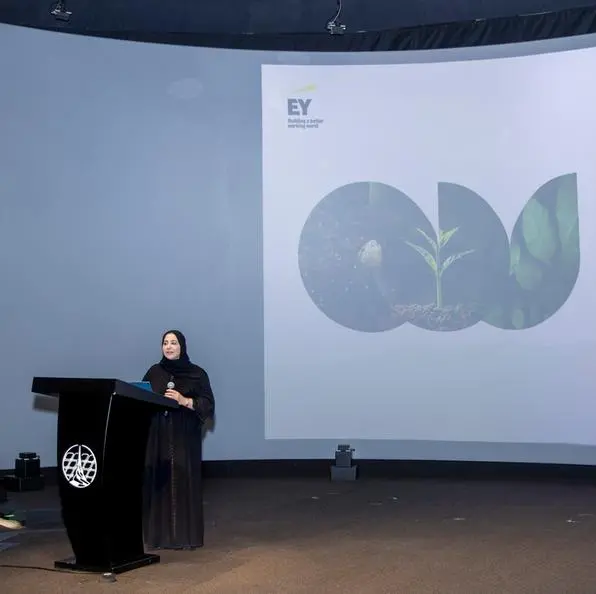PHOTO
Annual Threat Report from Symantec Reveals One in Ten Targeted Attack Groups Use Malware Designed to Disrupt
Dubai, UAE – Cyber criminals are rapidly adding cryptojacking to their arsenal and creating a highly profitable new revenue stream, as the ransomware market becomes overpriced and overcrowded, according to Symantec's (Nasdaq: SYMC) Internet Security Threat Report (ISTR), Volume 23, released today. Cryptojacking is the unauthorized use of one’s computing resources for mining of cryptocurrencies.
“Cryptojacking is a rising threat to cyber and personal security,” said Hussam Sidani, Regional Manager for Gulf, Symantec. “The massive profit incentive puts people, devices and organizations at risk of unauthorized coinminers siphoning resources from their systems, further motivating criminals to infiltrate everything from home PCs to giant data centers.”
The UAE’s 2017 Internet Security Threat Profile improved globally with the country dropping from its world rank of 51 in 2016 to 52 in 2017. However, in the Middle East and Africa (MEA), UAE jumped from its 10th regional rank to 9th this year. The 2017 regional threat ranking is based on eight metrics that represent the main sources of threats: malware (malicious code), spam, phishing hosts, bots, network attacks, web attacks, ransomware and cryptominers. In past year, the UAE primarily faced threats from cyptominers, ransomware and malware.
Symantec's ISTR provides a comprehensive view of the threat landscape, including insights into global threat activity, cyber criminal trends and motivations for attackers. The report analyzes data from the Symantec Global Intelligence Network™, the largest civilian threat collection network in the world, which tracks over 700,000 global adversaries, records events from 126.5 million attack sensors worldwide, and monitors threat activities in over 157 countries and territories. Key highlights include:
Cryptojacking Attacks Explode by 8,500 Percent
During the past year, an astronomical rise in cryptocurrency values triggered a cryptojacking gold rush with cyber criminals attempting to cash in on a volatile market. Detections of coinminers on endpoint computers increased by 8,500 percent in 2017.
In the MEA, UAE had the 3rd highest share of cryptominers, while Saudi Arabia ranked 1st, according to Symantec’s ISTR. Globally, U.S. had the largest global share of all cryptomining detections in 2017 (24.47 percent), followed by Japan and Germany.
With a low barrier of entry – only requiring a couple lines of code to operate – cyber criminals are harnessing stolen processing power and cloud CPU usage from consumers and enterprises to mine cryptocurrency. Coinminers can slow devices, overheat batteries, and in some cases, render devices unusable. For enterprise organizations, coinminers can put corporate networks at risk of shutdown and inflate cloud CPU usage, adding cost.
“Now you could be fighting for resources on your phone, computer or IoT device as attackers use them for profit,” said Sidani. “People need to expand their defenses or they will pay for the price for someone else using their device.”
IoT devices continue to be ripe targets for exploitation. Symantec found a 600 percent increase in overall IoT attacks in 2017, which means that cyber criminals could exploit the connected nature of these devices to mine en masse.
Majority of Targeted Attackers Use Single Method to Infect Victims
The number of targeted attack groups is on the rise with Symantec now tracking 140 organized groups. Last year, 71 percent of all targeted attacks started with spear phishing – the oldest trick in the book – to infect their victims. As targeted attack groups continue to leverage tried and true tactics to infiltrate organizations, the use of zero-day threats is falling out of favor. Only 27 percent of targeted attack groups have been known to use zero-day vulnerabilities at any point in the past.
The security industry has long discussed what type of destruction might be possible with cyber attacks. This conversation has now moved beyond the theoretical, with one in ten targeted attack groups using malware designed to disrupt.
For instance, the FBI issued a warning just last week that hackers previously intruded on critical American systems, including U.S. power grids, with the potential to disrupt the running of these plants. Closer to home, a petrochemical plant in Saudi Arabia was attacked specifically for sabotage and to potentially trigger an explosion in August 2017.
Business-Savvy Cyber Criminals Price Ransomware for Profit
In 2016, the profitability of ransomware led to a crowded market. In 2017, the market made a correction, lowering the average ransom cost to $522 and signaling that ransomware has become a commodity. Many cyber criminals may have shifted their focus to coin mining as an alternative to cashing in while cryptocurrency values are high. Additionally, while the number of ransomware families decreased, the number of ransomware variants increased by 46 percent, indicating that criminal groups are innovating less but are still very productive.
UAE was the sixth most targeted country in MEA for ransomware attacks, down four spots from 2016. Saudi Arabia again experienced the highest number of ransomware detections in the region, maintaining its leading ranking in MEA. Globally, UAE ranked 41st with 0.30 percent of ransomware attacks detected worldwide. KSA stood at the 25th spot, with 0.61 percent of global detections.
Implanted Malware Grows by 200 Percent, Compromising Software Supply Chain
Symantec identified a 200 percent increase in attackers injecting malware implants into the software supply chain in 2017. That’s equivalent to one attack every month as compared to four attacks the previous year. Hijacking software updates provides attackers with an entry point for compromising well-guarded networks. The Petya outbreak was the most notable example of a supply chain attack. After using Ukrainian accounting software as the point of entry, Petya used a variety of methods to spread laterally across corporate networks to deploy their malicious payload.
One in every 238 emails sent to organizations in the UAE contained malware, much higher than the global average of one in 412. Large organizations (more than 2,501 employees) continued to be plagued by malicious email with on in every 76 emails containing a malicious attachment or URL. Construction, transportation and public utilities, and services were the leading industries to receive malicious email.
Mobile Malware Continues to Surge
Threats in the mobile space continue to grow year-over-year, including the number of new mobile malware variants which increased by 54 percent. Symantec blocked an average of 24,000 malicious mobile applications each day last year. As older operating systems continue to be in use, this problem is exacerbated. For example, with the Android operating system, only 20 percent of devices are running the newest version and only 2.3 percent are on the latest minor release.
-Ends-
About the Internet Security Threat Report
The Internet Security Threat Report provides an overview and analysis of the year in global threat activity. The report is based on data from Symantec’s Global Intelligence Network, which Symantec analysts use to identify, analyze and provide commentary on emerging trends in attacks, malicious code activity, phishing and spam.
Visit Symantec’s Threat Intelligence blog, and register for Symantec’s ISTR webinar on April 12 at 10 a.m. Pacific / 1 p.m. Eastern, to learn more about this year’s results. Members of the press may visit the digital press kit for additional materials.
About Symantec
Symantec Corporation (NASDAQ: SYMC), the world’s leading cyber security company, helps organizations, governments and people secure their most important data wherever it lives. Organizations across the world look to Symantec for strategic, integrated solutions to defend against sophisticated attacks across endpoints, cloud and infrastructure. Likewise, a global community of more than 50 million people and families rely on Symantec’s Norton and LifeLock product suites to protect their digital lives at home and across their devices. Symantec operates one of the world’s largest civilian cyber intelligence networks, allowing it to see and protect against the most advanced threats. For additional information, please visit www.symantec.com or connect with us on Facebook, Twitter, and LinkedIn.
© Press Release 2018


















